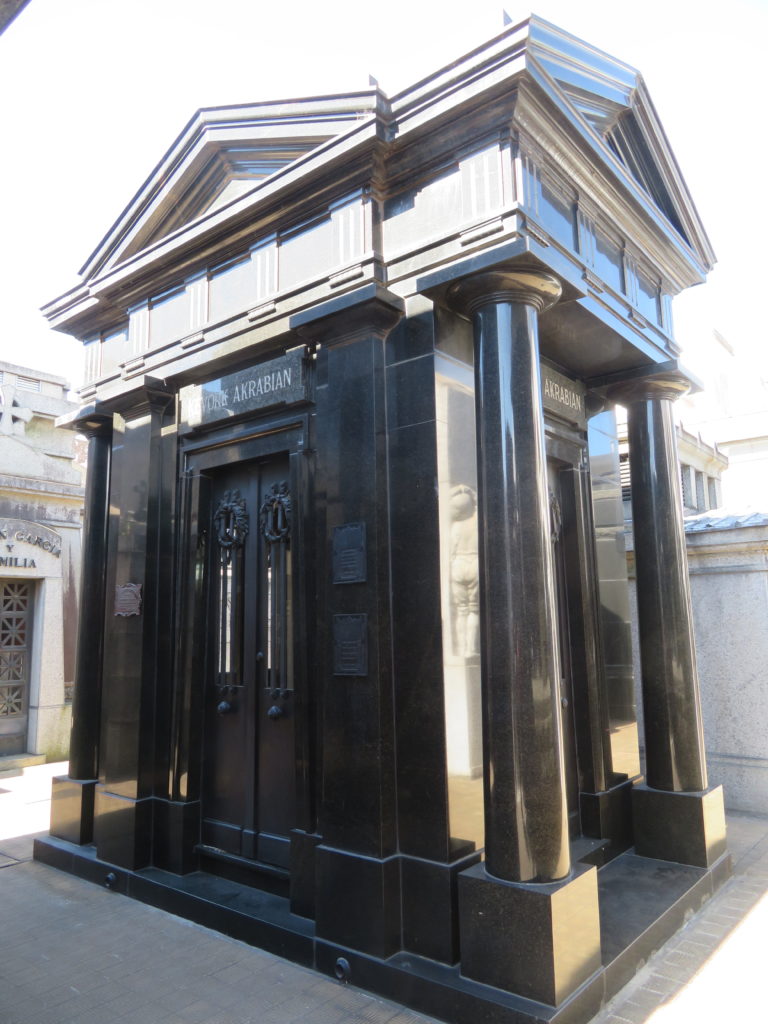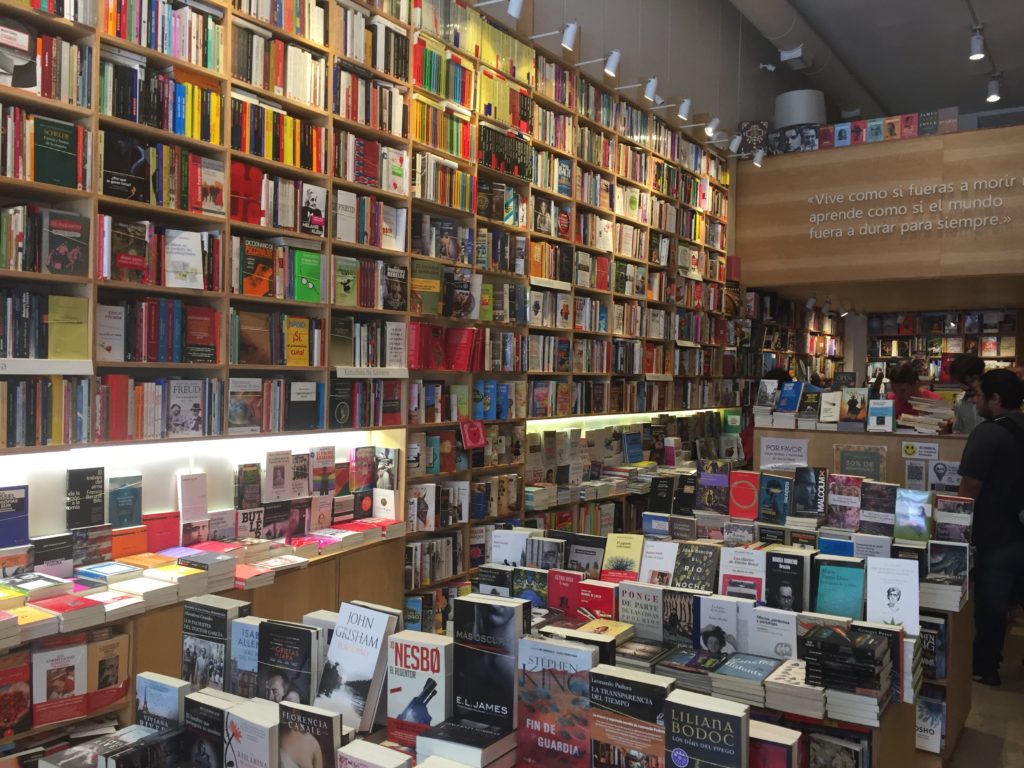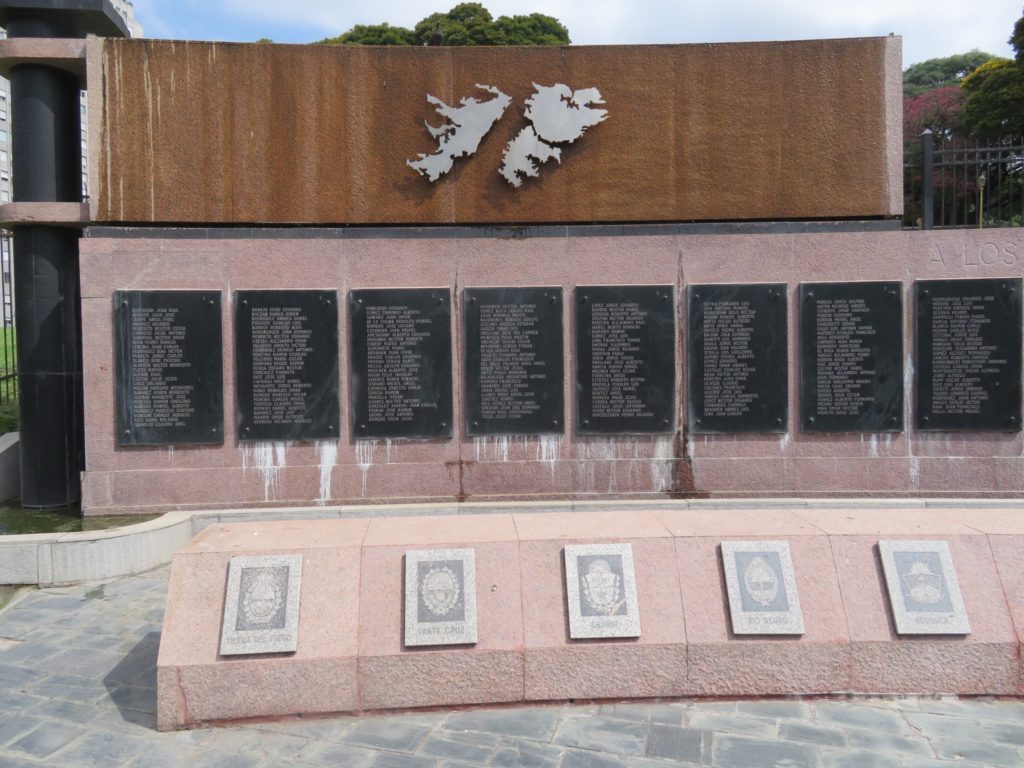Buenos Aires began to significantly develop at the end of the nineteenth and early twentieth centuries when Argentina’s agribusiness began to export to Europe and the rest of the world. The money generated from this enabled the city to develop with large boulevards and substantial buildings very much modelled on Paris. Much of the finance used was largely sourced from Britain, while many of the new immigrants came from Italy. The combination of France, Britain and Italy melded together with the Spanish language and ancestry from the original settlers makes the city a unique combination of the four distinct European cultures.
 The many tombs and mausoleums Recoleta Cemetery are a lasting reminder of the eclectic combinations of cultures that make up Buenos Aires. While the Recoletta is not as large as some of the cemeteries we visited in São Paulo it is impressively walled in, it was the old orchard of the church, and many of the angels and gargoyles adorning the tombs can be seen peering over the walls.
The many tombs and mausoleums Recoleta Cemetery are a lasting reminder of the eclectic combinations of cultures that make up Buenos Aires. While the Recoletta is not as large as some of the cemeteries we visited in São Paulo it is impressively walled in, it was the old orchard of the church, and many of the angels and gargoyles adorning the tombs can be seen peering over the walls.
The Recoleta’s most famous resident is Evita, who is interned in one of the more modest mausoleums, a black marbled affair for the Familia Duarte. This mausoleum has become a bit of a shrine based on the glamour and role she had in Argentinian society, being a poor actress who ended up marrying a soldier who became the nations president. Some of the other mausoleums are enormous, almost being churches in their own right, building both high above ground and deep below ground. Most are well maintained, but some are in a state of disrepair as the costs of maintain such opulent structures after death would dent even the largest budget.
 The Government buildings especially the Casa Rosada and the Palacio del Congreso bookend the Avenida de Mayo, in between are many of the City’s main commercial buildings including the elegant Café Tortoni an old fashioned coffee house that has bcome a Buenos Aires institution. Most days, this being Argentina, there are demonstrations of one form or another outside these government buildings.
The Government buildings especially the Casa Rosada and the Palacio del Congreso bookend the Avenida de Mayo, in between are many of the City’s main commercial buildings including the elegant Café Tortoni an old fashioned coffee house that has bcome a Buenos Aires institution. Most days, this being Argentina, there are demonstrations of one form or another outside these government buildings.
 In the blocks of streets between Avenida de Mayo and Avenida Corrientes there are many old school bookshops. While not as grand as El Splendid Arteno they are serious affairs, Argentina has one of the most prolific publishing industries and also Amazon has not yet reached Argentina, thus enabling a great tradition to be maintained. The proprietors of these shops know their literature, both Argentinian and international and have some cleaver teaser displays of combinations of books to draw you into their shops.
In the blocks of streets between Avenida de Mayo and Avenida Corrientes there are many old school bookshops. While not as grand as El Splendid Arteno they are serious affairs, Argentina has one of the most prolific publishing industries and also Amazon has not yet reached Argentina, thus enabling a great tradition to be maintained. The proprietors of these shops know their literature, both Argentinian and international and have some cleaver teaser displays of combinations of books to draw you into their shops.
 Calle Florida is the main shopping street and is crowded with both Porteños and tourists. Also prevalent on Calle Florida are many individuals shouting out “Cambio” for the local foreign exchange business. Argentina has not fully recovered from the threats of defaults and being excluded from international financial markets and operates significantly more than both Brazil and Uruguay on a cash basis. Furthermore drawing out cash from an ATM using a foreign card the banks charge a usurious 10% fee on your cash withdrawal. The Cambio sellers operate in a sort of grey market that is largely tolerated by the authorities.
Calle Florida is the main shopping street and is crowded with both Porteños and tourists. Also prevalent on Calle Florida are many individuals shouting out “Cambio” for the local foreign exchange business. Argentina has not fully recovered from the threats of defaults and being excluded from international financial markets and operates significantly more than both Brazil and Uruguay on a cash basis. Furthermore drawing out cash from an ATM using a foreign card the banks charge a usurious 10% fee on your cash withdrawal. The Cambio sellers operate in a sort of grey market that is largely tolerated by the authorities.

At the end of Calle Florida in Plaza San Martin is there not only an impressive statue to one of Argentina’s founding fathers, there is also a very eloquent memorial to the 625 Argentinian conscripts and service personnel that died in the Falklands War. The memorial is guarded by two soldiers and not only lists all the casualties; it also contains a marble map of the Falkland Islands, with water flowing behind the map, which gives the illusion of tears.

Together with its passion for football and tango, its obsession with dogs, which are subjects of earlier blogs, Buenos Aires has to be one of the most delightful and elegant world cities to visit.
 Date: 27/02/2018 to 06/03/2018
Date: 27/02/2018 to 06/03/2018
